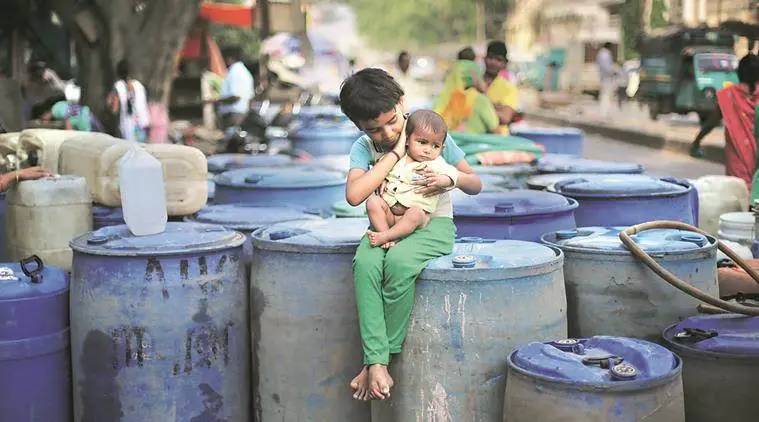- India
- International
Report shows sharp dip in water table across Bihar
About 10 districts, including Katihar and Begusarai, reported a dip of 17 feet to 25 feet in its water table and Patna too reported a 17-feet dip. The report also says the water table in the state has gone down from 10 to 200 feet in the last 10 years.
 Water conservation practitioner Kishore Jaiswal, who has worked with NABARD and other agencies over the last 10 years on water harvesting in Munger, Jamui and Banka, called the situation “very alarming”. (Representational Image)
Water conservation practitioner Kishore Jaiswal, who has worked with NABARD and other agencies over the last 10 years on water harvesting in Munger, Jamui and Banka, called the situation “very alarming”. (Representational Image)
The Water table has dipped alarmingly across Bihar between August 2019 and February 2020, according to the latest telemetry report by the state Minor Water Resources Department released last week.
The dips in water table range from 13 feet to 25 feet. The situation is particularly alarming in the Seemanchal and the southern part of the state.
Why water table is dipping in Bihar
Uneven distribution of rains, lack of water-harvesting measures and encroachment upon water bodies are being cited as the major reasons for the alarming dip in water table across Bihar. A recent survey by the state government showed that 34,559 water bodies had been encroached upon. So far, temporary encroachment has been cleared from 20,432 water bodies and permanent encroachment from 2,123 water bodies.
About 10 districts, including Katihar and Begusarai, reported a dip of 17 feet to 25 feet in its water table and Patna too reported a 17-feet dip. The report also says the water table in the state has gone down from 10 to 200 feet in the last 10 years.
According to the report, the groundwater level in Bihar earlier ranged from 40 feet to 200 feet, but the recent dips have brought down the range to between 60 and 250 feet. While this could lead to water crisis during summers, a drought could aggravate the problem.
The telemetry report said two blocks of Katihar district in Seemanchal reported a dip of 25 feet from the 50-feet water level in August. While the dip was 19 feet in Rafiganj, Aurangabad, it was 17 feet in Jogapatti, West Champaran, 22 feet in Bhagwanpur, Begusarai, 24 feet in Mansoorchak, Begusarai, 18 feet in Gaya and 17 feet in Bakhtiyarpur, Patna. Bhagalpur, Aurangabad, Arwal and Buxar reported dips between 12 and 14 feet.

Water conservation practitioner Kishore Jaiswal, who has worked with NABARD and other agencies over the last 10 years on water harvesting in Munger, Jamui and Banka, called the situation “very alarming”.
“The depleting groundwater level is a crisis that is emerging worldwide, but in Bihar it is getting acute due to loss of forest and vegetation, dependency on groundwater and depletion in surface water resources, overexploitation of groundwater with the coming of powerful pumps and cultivation of high water-consuming crops,” he said.
“There is an urgent need to check soil erosion, revive traditional water management practices and more efficient use of water in agriculture. Also, roof rainwater harvesting system should be used to take care of urban needs,” he said.
Kumar Arun Prakash, special secretary of the Minor Water Resources Department, said, “Though we have not yet fully analysed the report, the water level has surely dipped alarmingly in seven-eight districts in comparison to the last two years. But we have initiated several measures under the Jal, Jeevan, Hariyali mission to improve the water table. An exercise to remove encroachment from water bodies and clear them of silt is being conducted on a mass scale and the results could start showing from next year.”
Under the mission, about 3,000 ponds are being cleaned and over 2,000 checkdams have been planned in small rivers.
“All these measures are part of the project due for completion by 2022,” said a government official.
Buzzing Now
Apr 16: Latest News
- 01
- 02
- 03
- 04
- 05






































